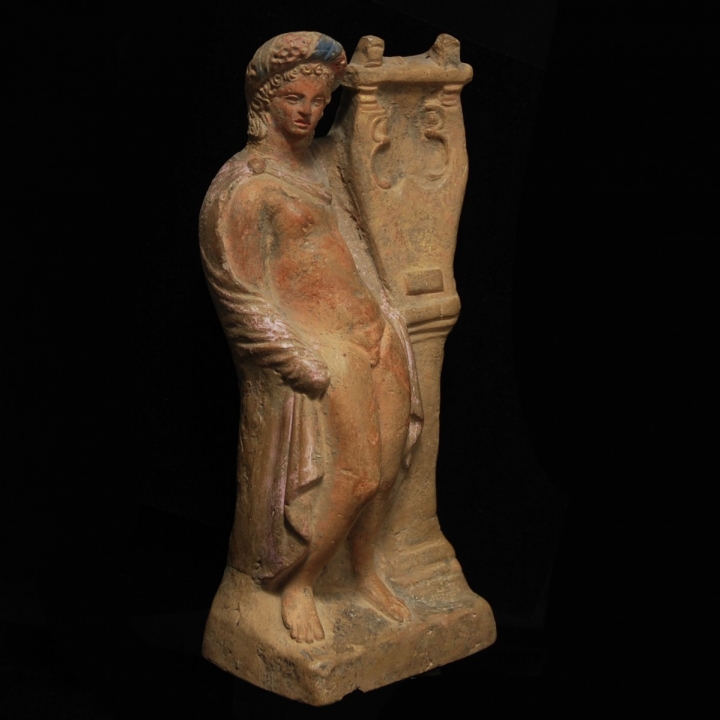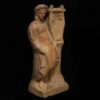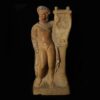Hellenistic Terracotta Statuette of Apollo Citharoedus
Culture: Greek/Asia Minor
Period: 3rd century B.C.
Material: Terracotta
Dimensions: 18.5 cm high
Price: Sold
Ref: 2331
Provenance: Old Belgian private collection. Thence with André Munter Archeologie, Brussels, Belgium. There acquired on 6 October 1999 by another Belgian private collection. Accompanied by an original certificate from André De Munter, Brussels, Belgium. On the back of the certificate a sticker with a stamp of a court inspection dated 26 June 2009 with the signature of the law clerk F. Coene N.
Condition: The head is professionally reattached and definitely belonging. On the back below the venting hole larger additions. In all a statuette of a strong expression.
Description: Very fine terracotta statuette of an adolescent Apollon with a cithara formed from a mould. The god in heroic nudity has thrown a cloak over his shoulder, pinned on the right shoulder with a brooch and wrapped around the right arm. He wears a laurel, underneath fine curls are cascading over the forehead and on the sides over the ears until reaching the shoulder. Apollo stands with the weight on his left leg, the right one bent forward. The body leans far back in contrapposto. With his left arm he embraces the large cithara, which stands on a column. In the Greek mythology Hermes invented the cithara. On the day of his birth he stepped out of his crib and met a turtle outside of this cave. Since he was interested in the shell he killed the turtle and ripped out its meat. When he realized that the shell sounded hollow he searched for a cow and killed it. He spanned the cow’s intestines over the shell. Hence the cithara was invented. Later Hermes gave it to Apollo to propitiate the latter for killing of his cattle. With beautiful color remains. From Asia Minor.





